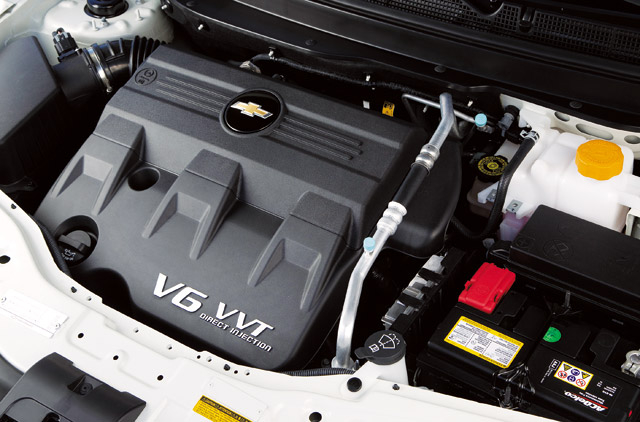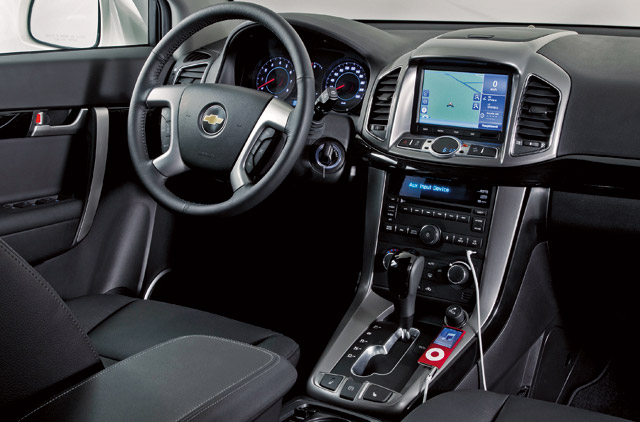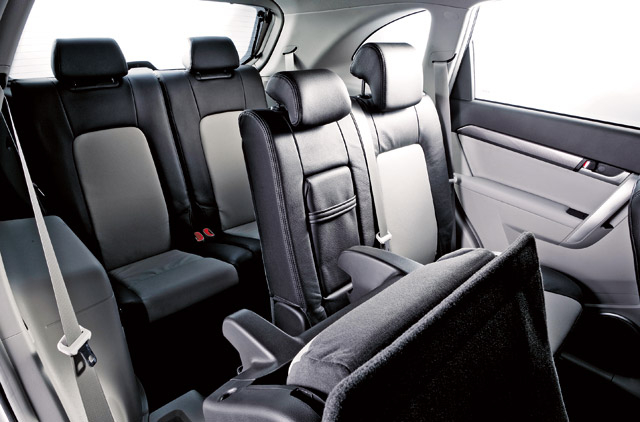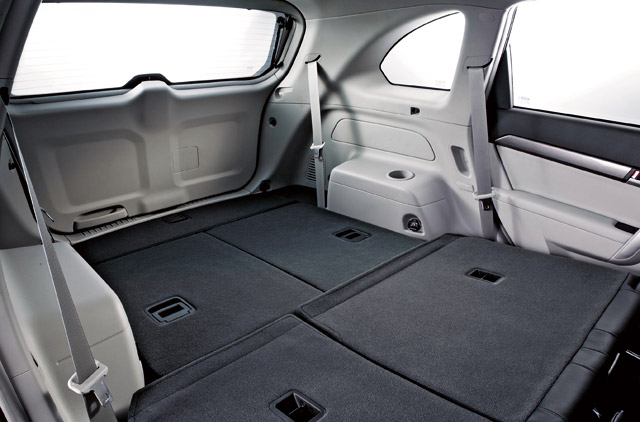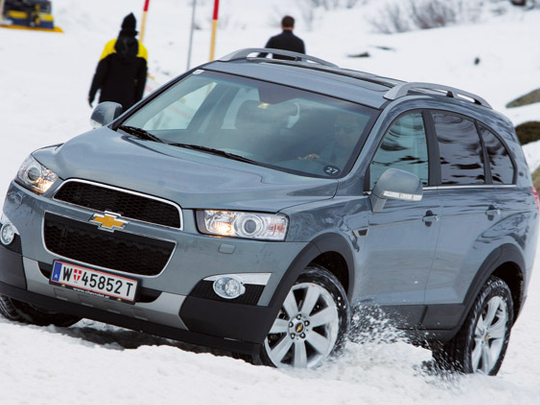
"You see it's almost the same, driving in snow and driving on sand" — our snow driving instructor tried making some sense of having scribes from the Middle East test drive a new 4x4 at a ski resort in Europe. Although he seemed to be trying a bit too hard when he said, "the only difference is one is white and the other is beige", I must admit that driving in the snow felt pretty much like driving over loose sand. And if a car is capable of tackling the former, it should also be adept at the latter, right?
Chevrolet has scores of exciting models in its line-up, but the fact that it chose to celebrate 100 years in the business with the 2011 version of its Captiva crossover shows the confidence it has in the new model. And for its global launch, Chevrolet picked the treacherously slippery Alpine roads surrounding the Austrian town of Innsbruck. In a refreshing departure from the usual launches, the focus was not directed at the cosmetic changesto the new model. Instead, attention was drawn to the car's all-terrain skills. To drive the point home further, Chevrolet had the whole venue plastered with posters of the 1935 Suburban Carryall, which it claims was the world's first SUV. And in fact, the Captiva does live up to this heritage with its off-road performance.
Although under normal driving conditions the front wheels get all the power, the active on-demand four-wheel drive system steps in whenever a need for more traction is detected, and allocates up to half of the torque to the rear within 100 milliseconds, thanks to the new electronically controlled clutch. The hill descent control feature in the Captiva makes light work of steep slopes by applying the brakes automatically without any driver involvement. Of course, this is a feature that all high-end SUVs pack these days, but there aren't many crossovers that do. Going uphill is equally easy, as the hill start system kicks in for a few seconds, stopping the car from rolling back. So, the 4x4 system in the Captiva is not merely a dummy as is the case with many other crossovers; it actually works. And going by our instructor's logic, if it works on snow, then it should on sand as well. We'll see when it comes here.
The 2011 Captiva's chassis has been retuned with special attention given to improving handling and ride quality. On the road, the car handles decently and the ride is reasonably comfortable, but there is a bit of noticeable body roll in corners and switchbacks. I also found the steering a tad disappointing with very little feedback from the road.
The Middle East market will be getting the Captiva with two petrol engine options — a 264bhp 3.0-litre V6 anda 169bhp 2.4-litre four-pot. I got to drive both cars, and naturally, the 3.0-litre was way smoother and much more responsive than the smaller unit, which sounded fast but wasn't, as I realised after a couple of aborted overtaking manoeuvres along the winding roads. It takes its own sweet time to gain speed and tops out at 175kph, although I didn't try taking it there. However, if it's economy and efficiency that you're looking for, the four cylinder version checks the boxes with a 4mpg advantage over the bigger engine.
Granted, the V6 is no gas guzzler either. At a claimed 22mpg, the 3.0-litre engine also returns above average fuel efficiency figures, even with its high peaks of 300Nm at 5,100 revs and264 horses at 6,950rpm.
Both powerhouses are mated to a new six-speed automatic gearbox which swaps cogs smoothly and effortlessly.
In the looks department, the Captiva retains some of the design cues from the outgoing model, but has a few added touches that give it a distinctly sportier and more muscular look. The most significant exterior change is the grille. The Captiva gets Chevrolet's signature dual opening grille, that's already been seen in the Malibu, Cruze, Traverse and other new models. The golden Chevy bow-tie at the centreof the grille is much larger than in the previous model. The headlights arealso narrower, housing stylish-looking lamps that give it a more upmarket look than before.
Inside, the new Captiva has improved considerably in its overall look and feel. Most of the plastics used are matte finish, and don't look cheap even though they're hard. You can even have a seven-seat version with seats that fold out of the boot floor, though these are best for kids only. The cabin is quite spacious and airy and features a Corvette-inspired dual cockpit and wraparound fascia, all illuminated in cool blue light that's pleasing to the eye.
However, the sat-nav isn't exactly class-leading. It does its job alright, but seemed to lag by a few seconds, as it would ask me to take an exit just when I was about to pass it. I got used to it though...
Also, the navigation system shut down briefly and had to be restarted when I was just a few kilometres into my drive. Hopefully they'll fix these issues by the time the Captiva reaches us.
The car is available as a five- or seven-seater, although if you opt for the third row seats which accommodate only kids, luggage space is compromised. However, without the third row, the Captiva has a boot space of 769 litres, which can be extended to 1,577 litres with the second row folded down as well.
It's also packed with a lot of kit as standard, like Bluetooth, electrically adjustable driver's seat, alloy wheels, and safety tech like electronic stability control, ABS and traction control system. The LTZ model — which is the top end one — will have all features like ventilated leather seats, multifunction steering wheel and power everything as standard. Some of these can be optionally specced in the LS and LT models.
Verdict
GM is looking at a starting price of Dh69,000 for the new Captiva when it debuts here early next month. The mid-range LT will cost Dh73,000 and the fully loaded LTZ will set you back Dh92K. The market is now crowded with crossovers in the same price range, with loaded versions of the Tucson and the Sportage selling at around Dh70K. Although they are smaller than the Captiva, Chevrolet will have a tough time fending off competition. But the Captiva has the advantage of being newer and having more features than Hyundai's ageing Santa Fe and the new Kia Sorento, which are similarly sized, and veterans like the RAV4 and CR-V. This new version has the potential to make a significant impact on this highly competitive segment, but whether it will or not, remains to be seen.
Spec & ratings
- Model 2011 Captiva LTZ
- Engine 3.0-litre V6
- Transmission Six-speed auto, 4WD
- Max power 264bhp @ 6,950rpm
- Max torque 300Nm @ 5,100rpm
- Top speed 198kph
- 0-100kph 8.6sec
- Price Dh92,000
- UAE friendly
- Plus Looks, good off-road skills, feature-packed
- Minus Strong competition


